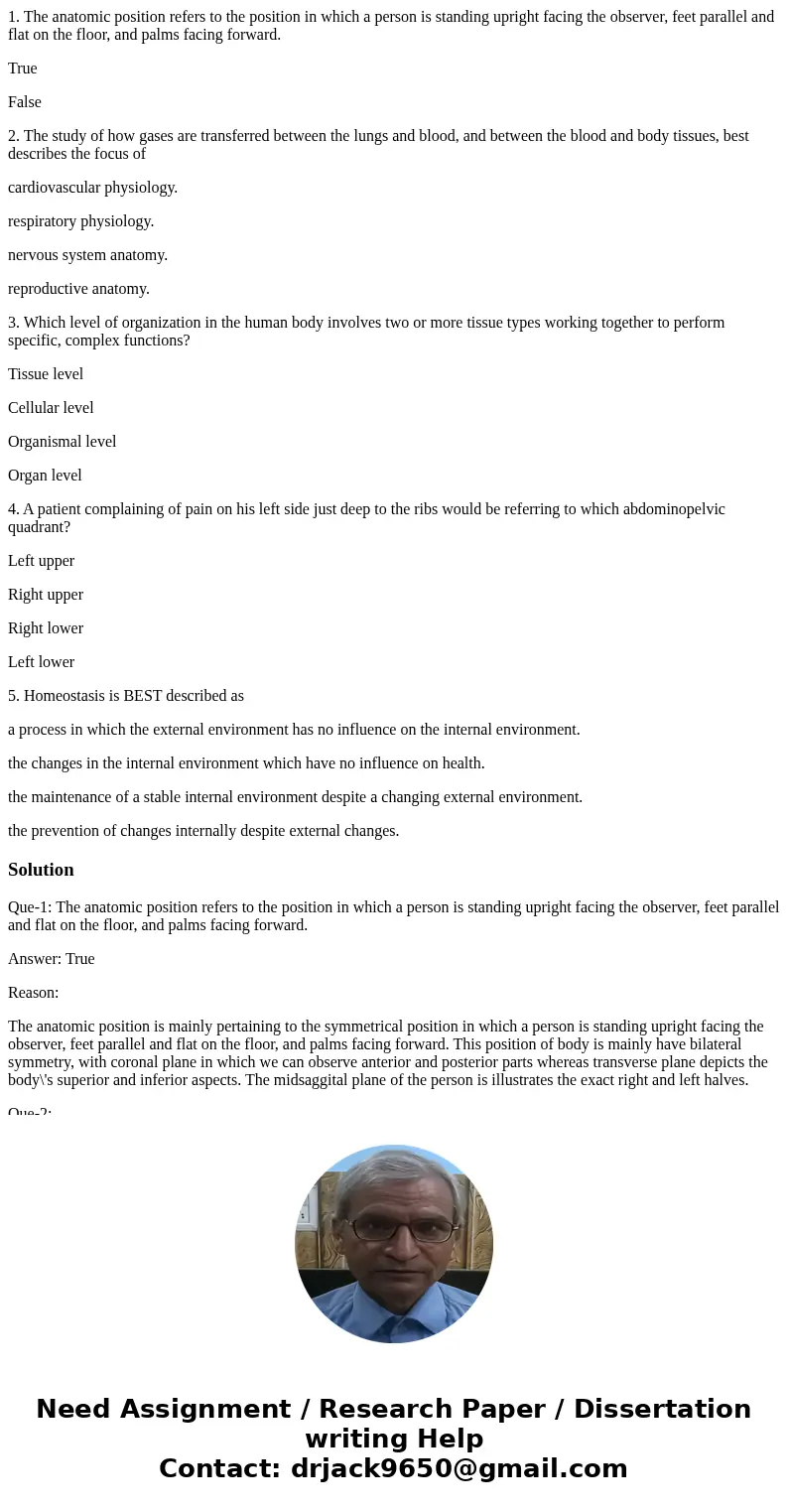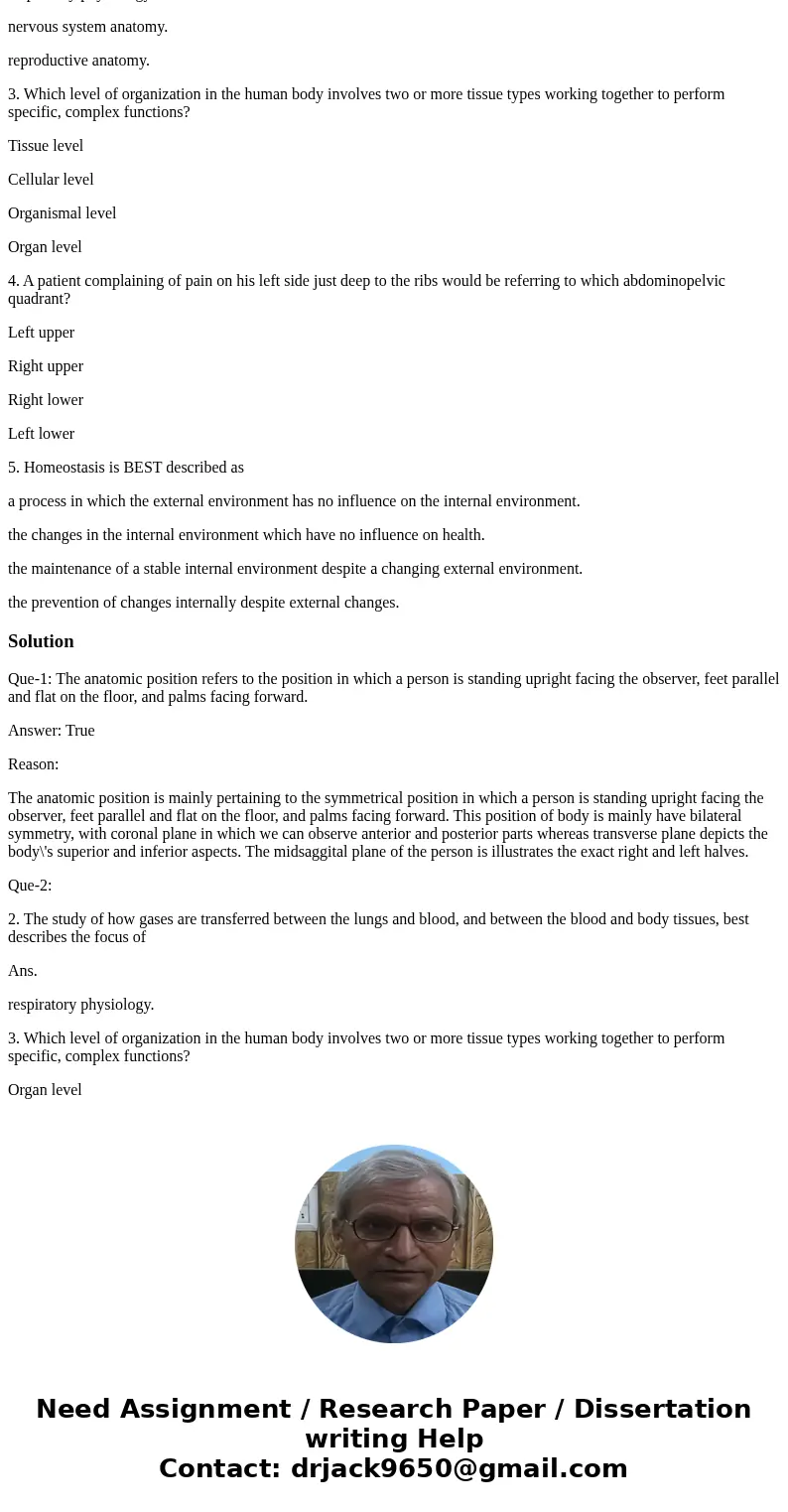1 The anatomic position refers to the position in which a pe
1. The anatomic position refers to the position in which a person is standing upright facing the observer, feet parallel and flat on the floor, and palms facing forward.
True
False
2. The study of how gases are transferred between the lungs and blood, and between the blood and body tissues, best describes the focus of
cardiovascular physiology.
respiratory physiology.
nervous system anatomy.
reproductive anatomy.
3. Which level of organization in the human body involves two or more tissue types working together to perform specific, complex functions?
Tissue level
Cellular level
Organismal level
Organ level
4. A patient complaining of pain on his left side just deep to the ribs would be referring to which abdominopelvic quadrant?
Left upper
Right upper
Right lower
Left lower
5. Homeostasis is BEST described as
a process in which the external environment has no influence on the internal environment.
the changes in the internal environment which have no influence on health.
the maintenance of a stable internal environment despite a changing external environment.
the prevention of changes internally despite external changes.
Solution
Que-1: The anatomic position refers to the position in which a person is standing upright facing the observer, feet parallel and flat on the floor, and palms facing forward.
Answer: True
Reason:
The anatomic position is mainly pertaining to the symmetrical position in which a person is standing upright facing the observer, feet parallel and flat on the floor, and palms facing forward. This position of body is mainly have bilateral symmetry, with coronal plane in which we can observe anterior and posterior parts whereas transverse plane depicts the body\'s superior and inferior aspects. The midsaggital plane of the person is illustrates the exact right and left halves.
Que-2:
2. The study of how gases are transferred between the lungs and blood, and between the blood and body tissues, best describes the focus of
Ans.
respiratory physiology.
3. Which level of organization in the human body involves two or more tissue types working together to perform specific, complex functions?
Organ level


 Homework Sourse
Homework Sourse